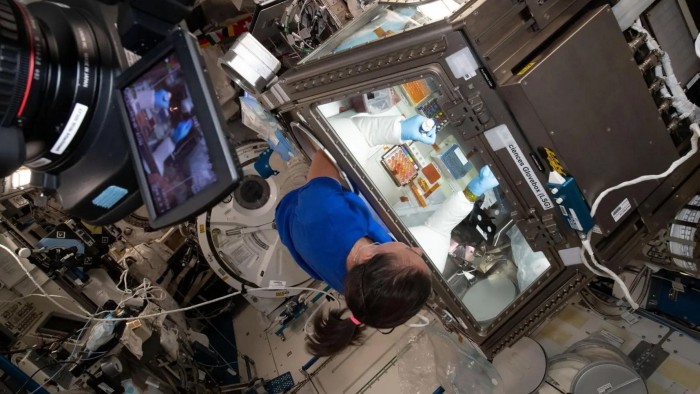Unlock the Editor’s Digest for free
Roula Khalaf, Editor of the FT, selects her favourite stories in this weekly newsletter.
The writer is CEO of the Aurelia Institute and founder of the MIT Space Exploration Initiative
Every industrial revolution is defined by its location — think of Manchester’s mills, Detroit’s assembly lines and the remote bubble of Silicon Valley’s R&D labs. The same is true for the next industrial revolution, currently unfolding 250 miles above our heads.
Picture this: it is 2040 and semiconductors are being manufactured in orbit to achieve quality performance impossible on Earth. Energy systems that dwarf terrestrial solar farms are operational. The space economy is approaching $2tn, spanning supply chains and transportation to consumer goods and lifestyle.
Much of this future depends on the cost of sending rockets into space continuing to fall. In the past 15 years, launch costs have dropped from $50,000 per kilogramme to under $2,000. They are expected to dip below $200/kg with Starship — a reusable, heavy-lift launch vehicle being developed by SpaceX.
Those prices are more FedEx than rocket science. The cost reduction will enable more companies to experiment, including start-ups like the UK’s Space Forge, which recently raised $30mn to manufacture semiconductors in orbit. Private space investment exceeded $26bn last year.
As a factory floor, space offers a set of unique properties. Microgravity assists new assembling habitats that may enable breakthroughs. Pharmaceutical companies have studied protein crystallisation on the International Space Station. SpaceX is exploring in-orbit drug research with its new Starfall programme.
Certain alloys can also only be created in low-gravity environments while orbital solar panels can collect energy 24/7, unaffected by weather or nightfall. These could be the next leap in clean energy.
There is sometimes a false choice presented between investing in Earth and investing in space. This misses the point. The infrastructure that we build in orbit can directly benefit Earth. Space-manufactured semiconductors can power more efficient data centres. Orbital pharmaceuticals could treat previously incurable diseases. Space-based solar panels can provide clean energy. Several governments, including the UK, are investing in the development of systems able to beam this energy back to Earth. If successful they could slash both energy costs and carbon footprints.
There are more immediate revenue-generating opportunities too.
Data companies are training AI on satellite imagery. Hedge funds use this information for commodity trading while logistics companies optimise routes. Companies can use the data provided from satellite imagery to predict retail footfall, agricultural yields, subsurface water location and supply chain disruptions. US based start-up Locus Lock is producing satellite-enabled GPS receivers that maintain ultra-precise accuracy even in compromised environments — critical for autonomous vehicles in dense cities, military operations in contested spaces, and orbital spacecraft navigation.
Satellites play a dual role in this orbital economy: both as the command-and-control infrastructure enabling manufacturing operations in space and data providers for Earth-based businesses. By the mid-2030s, the amount of information they provide will have multiplied. Thousands of earth-observation satellites will be producing petabytes of data daily — almost double today’s level.
Every industrial revolution rewards early movers and punishes laggards. We need to see space as an emerging market — one that requires strategic attention. Those who take it seriously will be well positioned to capitalise on orbital opportunities. Those who ignore the developments run the risk that one day they will be competing against technology that is impossible to match on Earth.
Read the full article here




